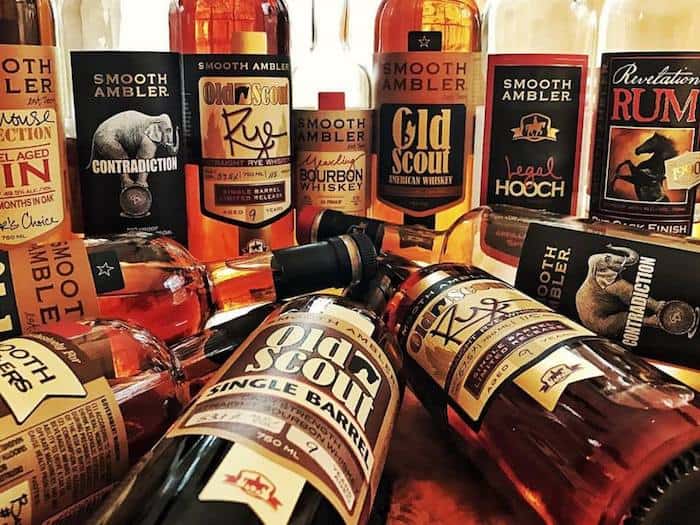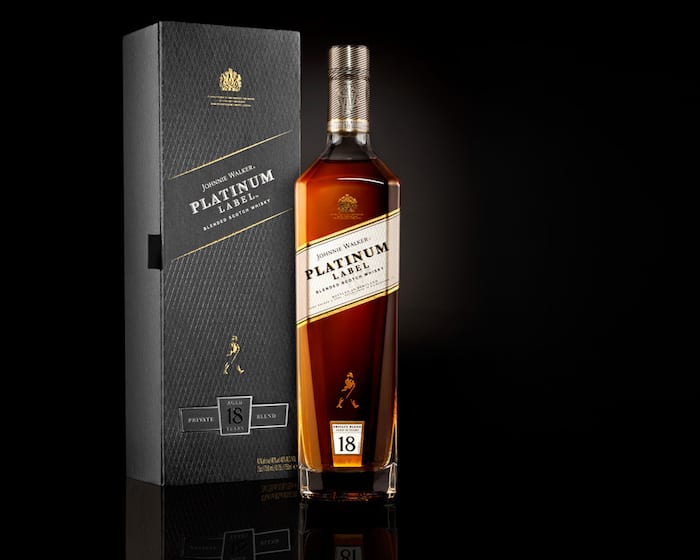“I don’t drink blended whisky.” That’s an actual quote from an attendee at a recent whisky event in New York. He was being offered a taste of a gorgeous, mature Irish whiskey, but turned it down as he headed straight for a table pouring Highland Park. I wanted to say, “Hey, sir, ready for me to blow your mind? That table of single malts you’re about to sip while scoffing at our lovely Irish drams – those are blends too!” That’s something that you, whisky lovers, may already understand. And if you don’t, well, let’s get into it.
Almost all whisky, unless the label clearly states that it’s bottled from a single cask or barrel, is a blend, in the sense that it’s made from a combination of different whiskies. That’s right: Even single malts with age statements are blends. In that instance, someone very skilled and qualified has access to a warehouse full of sleeping whisky and chooses different barrels to make up the blend, all of which contain malts that were made in the same facility but have a range of characteristics – perhaps different ages, cask types, warehouse conditions, and so forth. Then, they’re all married together to create a whisky with a specific flavor profile. The person who has this job is called a Master Blender, and they’ve trained hard on many levels to understand the inner workings of whisky making, including several years in intense scientific education.
Apart from single malts, master blenders make blended whisky that is labeled as such – in Scotland, that means whisky that is made up of different malts that might come from a range of distilleries, and may also include grain whisky. In the United States, blended whiskey must include at least 20% straight whiskey, with the remainder made up of any whiskey or neutral spirits (20% is a minimum – some blended whiskeys are nothing but straight whiskey).
I asked four different whisky makers – Johnnie Walker’s Emma Walker (no relation), Compass Box’s John Glaser, Kavalan’s Ian Chang and Smooth Ambler’s John Little – about blending their styles of whisky.
Scotch Whisky
Amanda Schuster: I happen to be a big fan of grain whisky since I think they add significant texture to a blend. As a master blender, what properties do you look for when you choose a grain whisky? Do you build the blend around them, or do you use them as a cook does spices to enhance what’s already there?
Emma Walker: I have to say, I very much share your love of grain whisky. As mentioned earlier, a blended Scotch is a careful balance of flavors from grain and malt whiskies and different cask types. When we’re selecting grain whiskies [for Johnnie Walker], these will have been matured in American Oak as this balance works really well – sweet, toffee, vanilla notes from the cask perfectly balance and emphasize the light, sweet, subtly fruity distillery characters. Grain whisky can also help to reveal subtle characters in malt whiskies as they combine together and enables us to balance strong, smoky distilleries and rich flavors that come from European Oak maturation.
John Glaser: We look at grain whiskies just as we look at malt whiskies—as flavor profiles. Grain whiskies can range from light and really boring (we don’t use this style) to sweet and full of vanilla (after 10 years in a first-fill barrel) to deeply rich and staggeringly delicious (when aged for 20 or more years in American oak). The use of a grain whisky, just like the use of a given malt whisky, is based on the style you are trying to create for your whisky recipe. As folks come to understand this, it will open their minds to what blending malt whisky with grain whisky can be!
Consider the difference between Compass Box Asyla and Compass Box Double Single: both fall under the category of Blended Scotch Whisky, made with a combination of malt whiskies and grain whiskies, but one is delicate, appropriate for an aperitif, while the other is deeper, more beguiling and complex, better suited as a late-evening drink. The Asyla uses the grain whiskies as a sweet foundation (even though they are just 50% of the blend), while The Double Single uses the grain whiskies as a complement to the malt whisky (at about 30% of the recipe) to add an extra dimension.
AS: Your approach to blending is quite unique. There is certainly a less-is-more thing going on, most evident in the latest Double Single release where only two whiskies are used. That’s a lot of pressure for two whiskies! For the individual selections, do you go in knowing what sort of cask finish and approximate level of maturity is going to get the job done, or do you have to assess what is available and taste different styles before making the final decisions about which ones will complement the other?
JG: The way we approach making new whiskies is a creative process, so it’s rare that two whisky projects would be the same in. Some projects involve assessing and combining mature whiskies, then letting the final blend marry in cask, blended, for anywhere from three months to three years. Some involve using some cask-finished components, perhaps made specifically for a project. Some projects involve combining the components and then finishing the whole batch.
Warm-Climate Whiskey
Blending for a whisky like Kavalan is very unique in that it involves casks that have matured at a more rapid rate due to the hot warehouse climate in Taiwan, and some can go “over the hill” too quickly. I wanted to know what choosing a blend is like under those conditions – is it built out from one whisky that seems like a good base and layers are added, or are a number of whiskies tasted and evaluated before deciding?
A spokesperson from Kavalan had this to say: “All of the whiskies for mixture casks or single casks need to be decided by Master Blender Ian Chang. Ian will taste each cask in the maturation warehouse, and once the whisky reaches the flavor and the quality that we want, we will bottle it directly. A number of whiskies will be tasted and then Ian will decide which compliments another… Ian examines and tastes every batch to make sure that they are ready to be bottled according to his experience.”

American Whiskey
AS: What are the attributes you look for when it comes to creating a consistent product?
John Little: While we do measure each batch against the previous batches before bottling, consistency is not our ultimate goal when we blend. We want to be consistently great, but if there are slight variances between batches, that’s ok to us. It’s sort of the nature of our small batch (three to five barrels at a time) process. But, the batches do need to have some similarities. Here’s our process:
Whether it’s going into Contradiction or Old Scout or another product, we test every single barrel before it goes into a master batch. After testing, Andy (our Blending Manager), selects the barrels we picked and puts those into a master blend according to ratios we’ve used in the past. Once the master batch is blended, he puts the juice back into those same barrels it came from to let them “live together” for a while. Think of it a bit like a good pot of chili….always better on the second or third day, or week/month, in our case.
Once those barrels are ready, he dumps them into the bottling run batch, mingling barrels from the master blend. Sort of a blend…of a blend. That gives us a bit of consistency from batch to batch.
AS: Are there unique challenges to selecting whiskey for American blends?
JL: The biggest challenge is finding when a product has hit its “sweet spot.” We believe bourbon mash bills with rye and rye whiskey are perceived to mature faster. The presence of rye, and it’s spicy characteristics, tend to mask youthful notes. Wheated bourbons, or bourbons with a very low rye content, tend to need more time to have a comparable maturity profile. So, trying to find the sweet spot can be difficult given the size or our operation and our availability of aged stock for our various blends. It’s also fascinating how a barrel can be completely different over three to six months, especially young barrels. Six months on a four-year-old product is 12.5% difference. On a 11-year-old product, there’s only a 4% age change.
AS: This is something I and many whisky fans have been wondering for years: What happens to a whisky that doesn’t make the cut for a specific blend? Does it have a chance at life in another blend, or is it retired to a sort of whisky heaven?
EW: For Johnnie Walker blends, we can choose from more than eight million casks of maturing Scotch whisky, giving us a flavor palette like no other. So you could say we are very much in whisky heaven! It’s not so much about a whisky not making the cut. It’s more about timing and opportunity; allowing a whisky to develop and choosing it at the right moment, for use in the right blend, that is the real skill.









